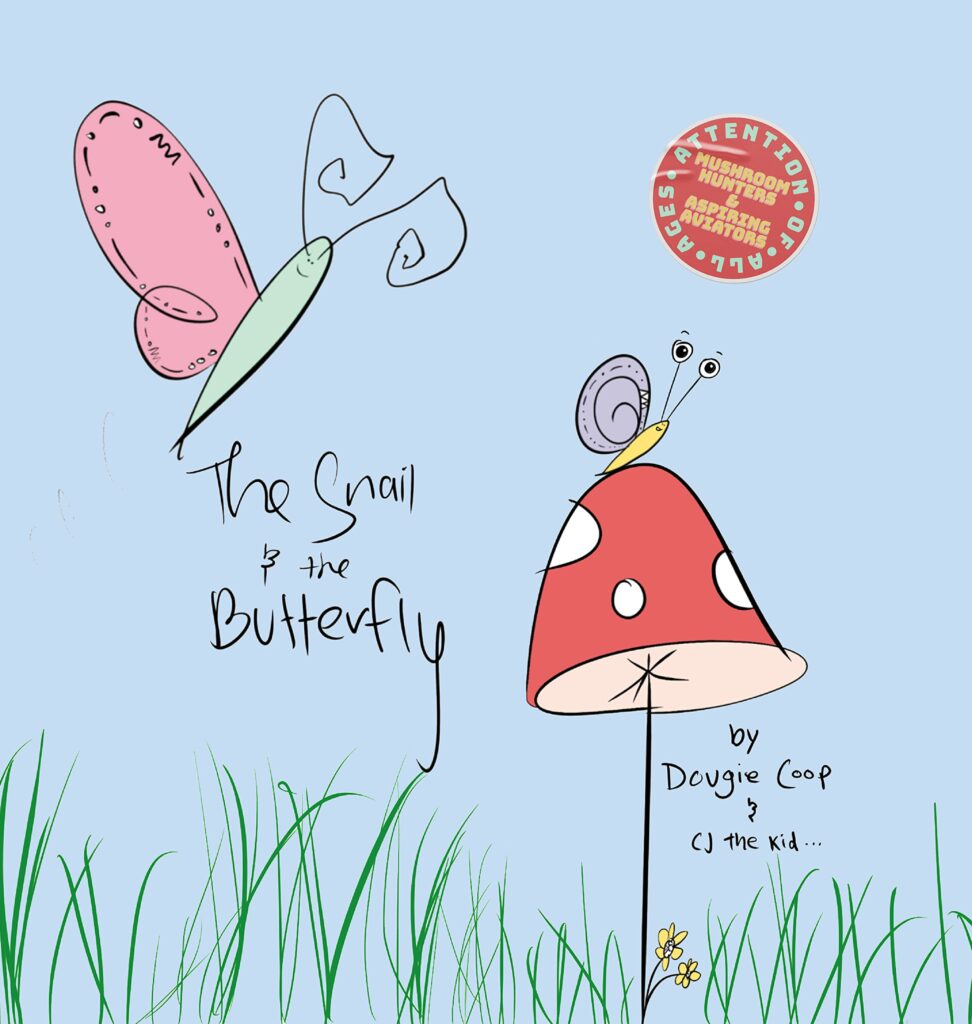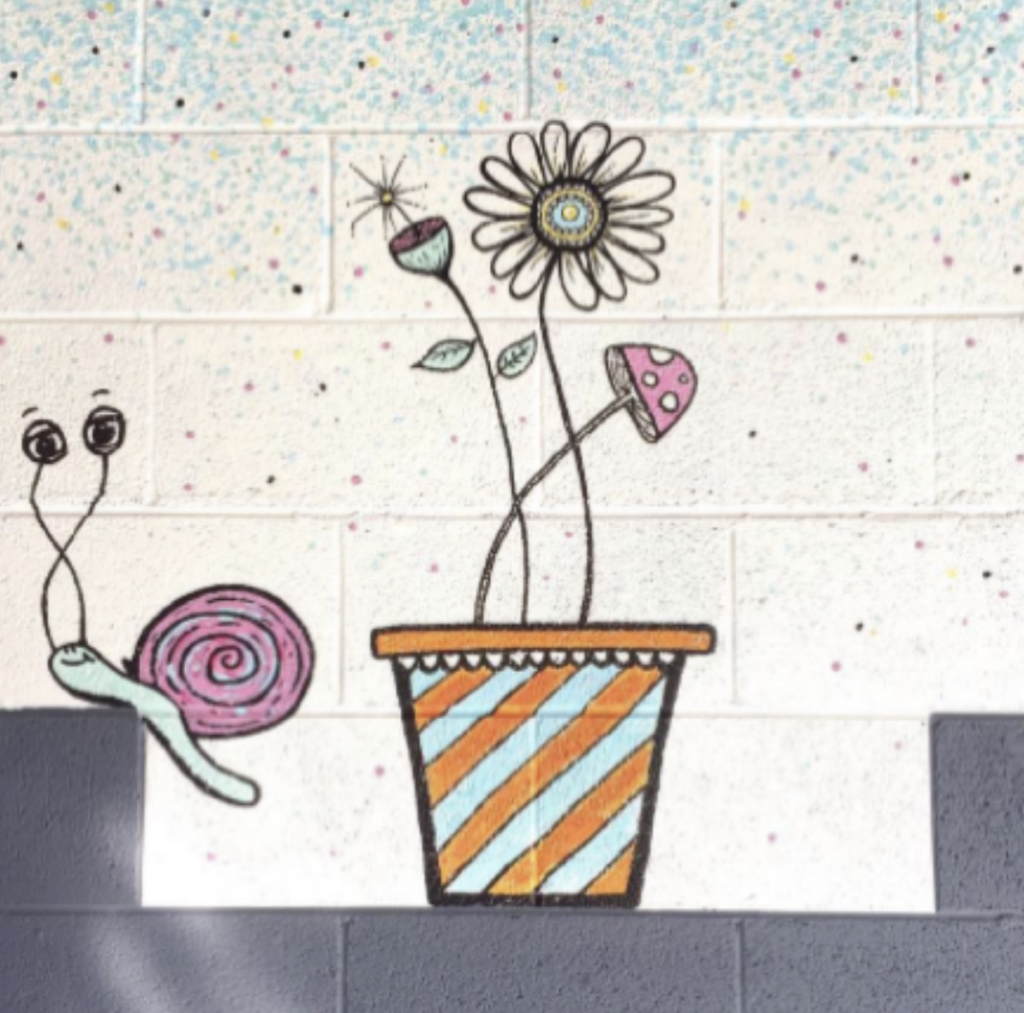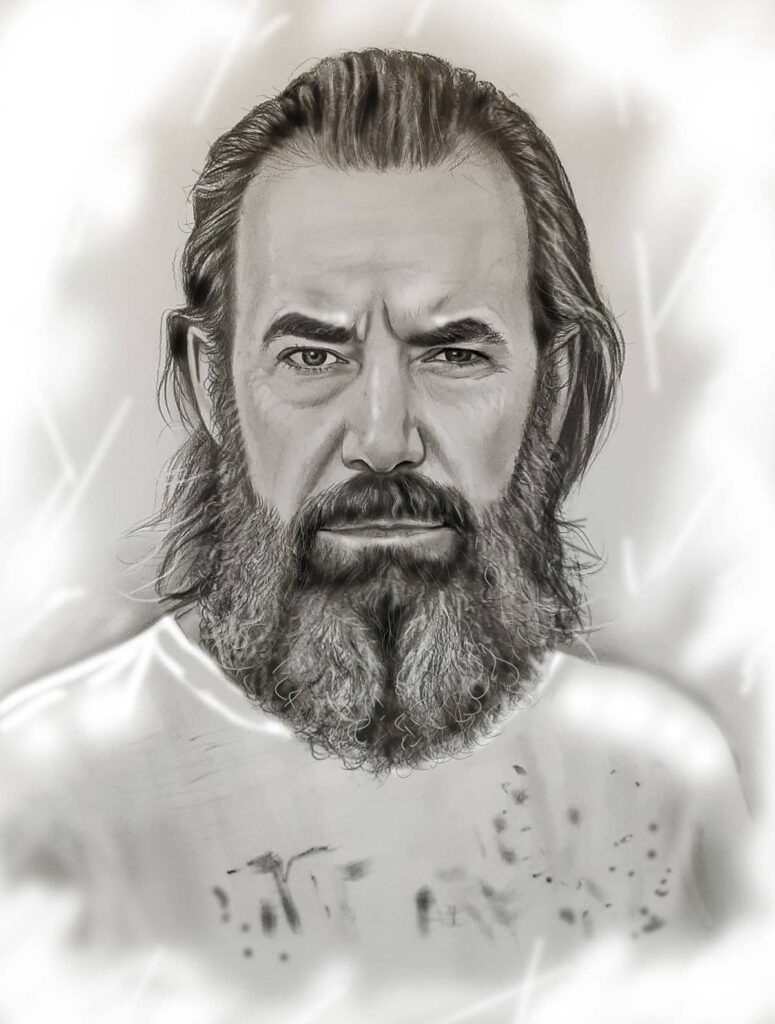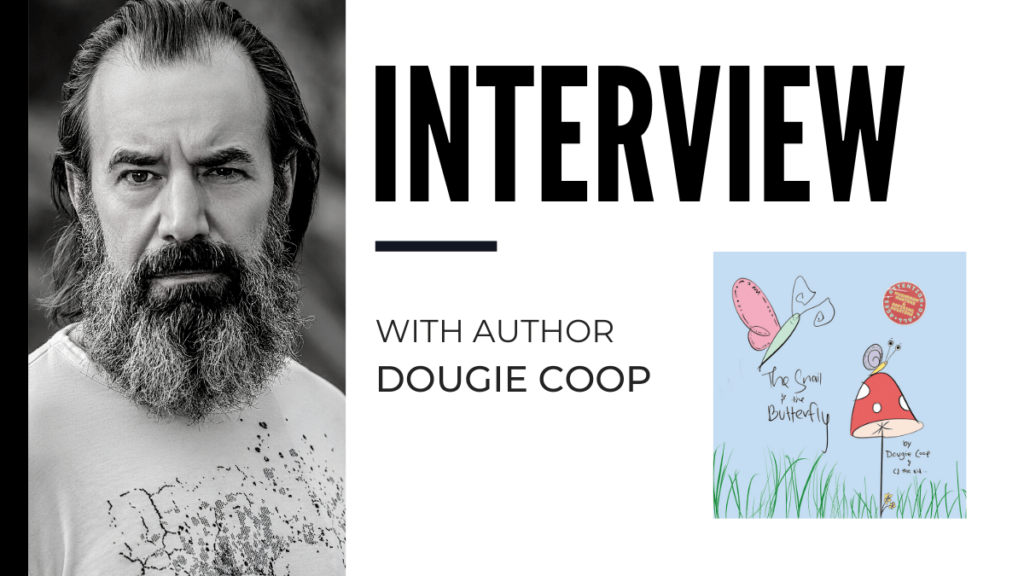An interview with Dougie Coop in partnership* with The Children’s Book Review.
Author Doug Cooper, known for his award-winning literary fiction and thrillers, including Outside In, The Investment Club, and Focus Lost, has recently released his first children’s picture book, The Snail and the Butterfly as Dougie Coop. As a well-traveled author who has explored over 25 countries on five continents, Coop is passionate about exploring the contradictions between our beliefs and actions in the pursuit of truth, beauty, and love.
In this interview, Coop wisely discusses the inspiration behind The Snail and the Butterfly and the intrinsic messages it conveys to its young readers. Coop’s love for literature and storytelling is evident in every aspect of his work.
The Snail and the Butterfly is a thought-provoking children’s book set to motivate and uplift readers of all ages to take a chance and pursue their passions. What was your motivation for writing this story?

My purpose was to share the message that we can all do great, seemingly impossible things, regardless of who we are and where we come from, if we allow ourselves to dream, believe, and persevere. The more subtle, mythic meaning is something I really think is missing in our modern culture. We encourage everyone to dream big, and that anything is possible, but we’re not really equipped for what happens when we struggle or fail, which will happen to us all at some point. This is one of the reasons why escapism is so rampant, and we seek out comfort, often to excess and much to our own detriment, whether it is food, alcohol, drugs, or whatever vice.
The little snail wants to fly and is determined to fly, but gets scared, doubts itself, and goes through all the questions we face in our daily lives. What am doing? Why am I doing this? Is this even possible? The easiest course when faced with these questions is to quit or hide, whether that is actual physical isolation or in other activities, healthy and unhealthy. So, the meaning here is that it’s okay to fail, to be scared, to question. Just take a pause, rest, recharge, refocus, and begin again.
The seed I hope to be planting in young minds and reviving in older ones is that we need to push through our fears, trust and listen to the butterflies around us, believe in ourselves, and take the leap when the time comes. It’s easy to get caught up in the solitary journey of life that we are in this alone, and we each need to forge our own paths. The reality is the journey is shared. We can learn from one another’s journeys and are here to help each other. We are both seeker and guide, student and teacher, snail and butterfly.
The importance of believing in ourselves and trusting our abilities, no matter how small or insignificant we may feel, and the power to take risks to pursue our goals are all messages that shine through. They are universal messages that should resonate deeply with all individuals, regardless of age, ability, or background. Did you have a specific audience in mind when you sat down to write this book?
The children’s book format and audience came way later. All my writing starts with inspiration. Something that flashes and catches my interest. From there, I try to get it from inside of me down on paper, usually in my journal. I’ll play with it there, forming, pulling, stretching it until a form emerges. This is when I’ll think about the format and the audience. Which form—poem, short story, song, screenplay, novel—is best to convey the idea and reach the audience who will find value in the message? The Snail And The Butterfly started out as a poem, then became a couple of different versions of a short story with angels and birds as the characters.

While living in Vegas and working on my second novel, The Investment Club, I met CJ the Kid at a coffee shop in the arts district, Makers & Finders, where we both hung out. One day I noticed some wall art he had drawn of a snail and a mushroomon on a cinder block wall. Something about the art really struck me. I asked him about it, and he showed me other drawings he had with the same style and setting and other characters like the butterfly. That’s when the lightning bolt struck.
I knew it was a children’s book with his art and a snail, butterfly, and mushroom as the characters. We talked about doing it but never really got started until we both had moved from Vegas. He was back in Australia, and me in Ohio. I reached out to him in September 2021 to check if he was still interested, which he was. I started sending him scenes one by one, basically just a description of the action and the words, and he would send me back the digital art.
A few amazing aspects to this. One, we never once talked on the phone, on video calls, or anything, and still haven’t. All work was done through the app messenger and email. Another was how simple the process was. Most of the time, he nailed it on the first try. Not much iterating back and forth. A few months later, we had the book done.
This picture book tells the story of a tiny snail that dreams of soaring through the skies like a butterfly but fears taking that first leap. Why a snail and a butterfly? From the seed of your inspiration for this story to the finished book, was it always a snail and butterfly? Or did you experiment with other animals?
The initial version was a poem—a conversation with an angel. Then it became a short story called “Tomorrow” about a young boy still in the womb who is visited by an angel the night before he is born. Then that became a story with bird eggs in a nest the night before they hatch. If you read those early versions, the core of the story and conversation hasn’t really changed. It stayed like that for years. I knew something was not quite right with it, but I wasn’t sure what to do, so I just left it. Once I saw CJ the Kid’s drawings, what I needed to do fell together. Even then, though, it still took years for everything to settle, take shape, and emerge.
The rhyming verse sets the story’s pace and keeps readers engaged as they embark on the adventure with the dear snail. What was your decision-making process for writing in rhyme? Is poetry something that’s a part of your everyday life? Or did this story just beg to be written in verse?
The verse was probably the easiest part of the story because that is what I heard in my head from the beginning. I just emptied it out onto the pages in my journal and crafted from there. There was never really a decision to include the verse because the verse was always the heart of the story.
Poetry has always been a part of my writing. I have journals full of verses and poems. Early on, inspiration came to me in phrases and lyrics. Something would flash, and I would think, “There might be something here.” I would dump it into the journal and sometimes forget about it for months or longer. At some point, it would flash again, and I would flip back and start shaping it.
My publisher, Rare Bird Books, and I have been discussing doing a collection of my writings with novel excerpts, short stories, and poetry, which has motivated me to go back through the poems and journal entries from the past thirty years. It’s been fun to reread my thoughts and ideas and how they have changed. I can’t emphasize enough the importance of journaling to everyone, not just writers. Whether anything ever becomes of the writing, it’s so satisfying and rewarding to revisit the earlier versions of ourselves on the pages.
CJ the Kid, a highly acclaimed Australian artist, brings your story further to life with simple imagery and vibrant colors that captivate young and old alike. Can you elaborate more on the writer-illustrator relationship?
As mentioned above, CJ the Kid and I met in Vegas. His characters and style were the final missing pieces. That was such a special time in Vegas. For a long time, downtown Vegas was Fremont Street. Tony Hsieh had moved the Zappos headquarters downtown and was investing in the Downtown Project to grow the downtown into more than a strip of casinos. That spirit was everywhere. It was the vision I had for The Investment Club before I even went there.
When I visited on initial research trips and experienced it firsthand, I knew I had to move there from Oslo, Norway, and write that novel. I mean, can you imagine two opposite environments more than Norway and Vegas? It was one of those decisions that when I visited for the first scouting look-sey in December of 2011, I knew the decision was already made. The path had been cast. I just had to follow it. What I didn’t know was that the course would also lead to CJ the Kid and the completion of this children’s book.
Another interesting fact I don’t think I have shared with anyone, including CJ, is that I used him as inspiration for a minor character in The Investment Club. In the novel, he is a local artist and love interest, or rather boy toy, of one of the main characters, Penny Market. He doesn’t have a name and appears only a few times, but I think even then, I recognized there was something more to our relationship than just coffee compadres in a burgeoning art scene.
The ending of your story is slightly unconventional (in a thought-provoking way). What would you like readers to know about your story’s end?
All dreams require belief, commitment, perseverance, and probably most of all, patience. But even more than that, the outcome of a dream is not the ending. It is a new beginning. This is why the last page of the story does not say “The End” and is “The Beginning…”. Take some time to enjoy, reflect, and learn from the outcome, but realize it is not the last step in what you have been doing. It is the first step in what you will be doing.
You’re a world-traveling author who has won numerous awards for your books; how have your travels helped your storytelling?
The different spaces and faces of traveling create a displacement in our mental, emotional, and physical states, opening our senses and consciousness. Our bodies move to a location quicker than our mental and emotional states, which take time to catch up. This heightens our awareness and mindfulness. We awaken. Everything is more visceral and vibrant. Routine is important for progress and consistency, but it can also lull us to asleep and dull our senses.
Traveling drops us into a fresh environment, reactivating childlike wonder and awe. It also removes us from the chains of expectations and responsibilities we deal with in our everyday lives. We are reborn, free to begin again.
Which of your awards do you feel most proud about?
Probably the most special is the first literary fiction award I won for Outside In. I was living in Vegas and heading back to Ohio to do some book signings and radio interviews since the setting is an island in Lake Erie. The one radio show told me we would record it, but he wasn’t sure it would air because the book was getting some pushback due to the controversial subject matter and excess in the novel. Stores on the island and in the area were refusing to sell it. I was feeling down and dejected. The same day I received all this unfortunate news, within hours, I was notified I had won the literary fiction award.
It reminded me how subjective the appreciation of art is and to not internalize and dwell on negative responses. Feedback is like weather. It is what it is. There is good and bad and in between. We must let all of it, positive and negative, wash over. We never know what lies ahead. We just have to trust that whatever is happening at the moment is exactly what needs to be happening at that specific time, regardless if we can see it or not.
Is there anything else you’d like to share about yourself, your writing, or The Snail and the Butterfly?
Just a reminder we need to be kind to ourselves. It’s something that has taken a long time for me to learn and at which I work a lot. We are all exposed to so much and pulled in so many directions, forcing us to say no to so many things just to say yes to ourselves. We question or don’t trust ourselves when we prefer to spend a quiet night at home rather than an evening out with friends or even something as simple as taking a nap when we are sleepy in the afternoon. We feel we are being lazy or will miss out on something if we do. We have coffee or splash cold water on our faces to power through. Our bodies and minds are telling us we need a break. We need to listen.
When we do and give ourselves the respite we require, we should feel good and thank ourselves, not feel guilty for putting ourselves ahead of other things or people. I don’t know why, but this is so difficult and requires so much faith and belief. We worry that by stepping off the wheel, we are quitting or will not get back on. We must trust that we will take the time we need, get back on when the time is right, and be stronger for it and better to help those around us.
This is very much a part of The Snail And The Butterfly and why I created the older, wiser voice of the butterfly as a main character. The little snail is experiencing all the fear, self-doubt, and loneliness we have all felt that is part of growing and maturing. The butterfly is understanding, comforting, and encouraging without pushing or putting expectations on the snail. We must all instill that butterfly voice in our heads.
“Oh little snail, this I know,
you have wings, just let them grow.
Spread them at your time of flight,
for the rest is determined by your sight.”
About the Book

The Snail and the Butterfly
Written by Dougie Coop
Illustrated by CJ the Kid
Ages 4+ | 42 Pages
Publisher: Rare Bird Books | ISBN-13: 978-1644283653
Publisher’s Synopsis: Attention Mushroom Hunters And Aspiring Aviators Of All Ages!
Have you ever wanted to do something great? Something no one else believed you could do? Well, here is your chance to learn how. Meet a little snail who wanted to fly and an old butterfly who questioned why. Travel with the little snail as he crawls up a mushroom determined to soar from the top. But every time, the same thing makes him stop: fear. Sound familiar?
Filled with inspiration and motivation, this magical conversation between an ambitious snail and a seasoned butterfly encourages us to pursue our dreams regardless of who we are or where we come from.
With words by award-winning author Doug Cooper aka Dougie Coop, and illustrations by acclaimed Australian artist CJ the Kid, the rhythmic verse and playful style remind us all we can achieve the impossible as long as we believe, trust, and persevere.
Sure to leave a lasting impression on all who read it, The Snail and the Butterfly not only entertains but also educates on the notion that dreams have no limits, and with perseverance, anything is possible.
The Children’s Book Review
Buy the Book
About the Author
Author Dougie Coop, or better known under his award-winning literary fiction and thriller pen name Doug Cooper, is the author of the literary novels Outside In, The Investment Club, Focus Lost, and host of the podcast, The Store Next Door. Always searching, he has traveled to over twenty-five countries on five continents, exploring the contradictions between what we believe and how we act in the pursuit of truth, beauty, and love. The Snail And The Butterfly is his first children’s picture book.
For more information, visit https://snailandbutterfly.com/

This interview—Dougie Coop Discusses The Snail and the Butterfly—was conducted between Dougie Coop and Bianca Schulze.

